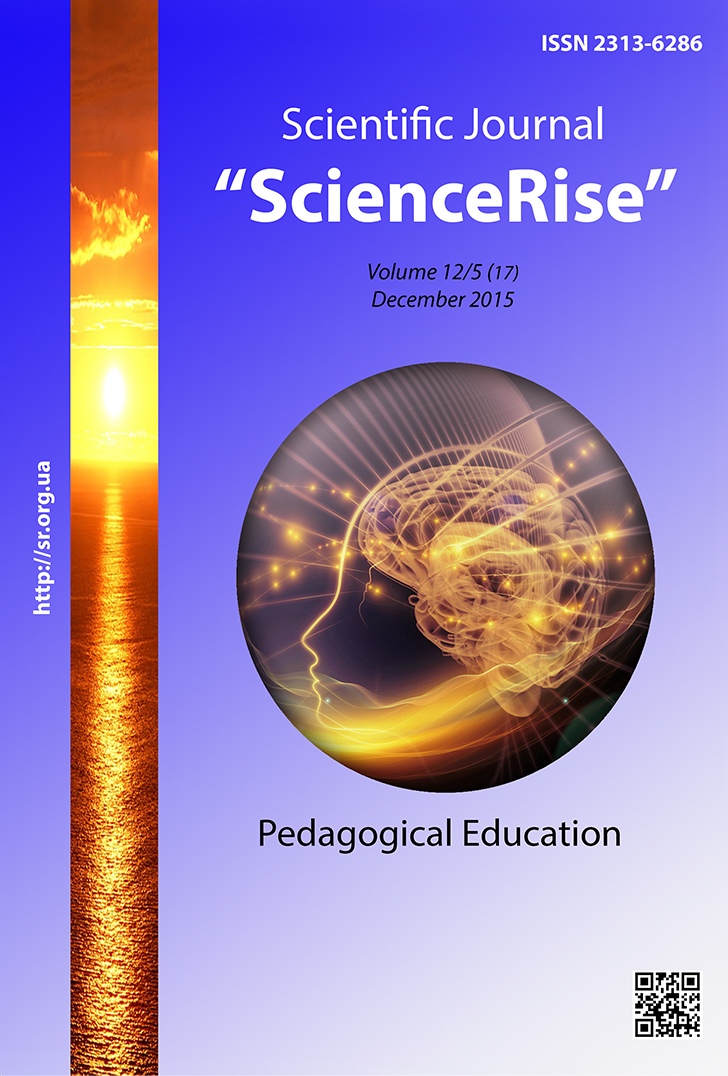Usage of statistical methods in the pedagogical researches
DOI:
https://doi.org/10.15587/2313-8416.2015.57049Keywords:
psychological and pedagogical research, pedagogical statistic, pedagogical model of the experiment, research hypotheses, statistical methods, statistical criteriaAbstract
An issue of actualization and development of knowledge in educational innovatics is highlighted in the article. Model of statistical results processing of pedagogical experiment is described. Methods of detection coincidences/differences of investigated characteristics in the experimental and control groups are presented. Recommendations about formulating statistical hypotheses and statistical selection criteria are offered. Possibilities of usage of «Pedagogical statistics» program for processing and analyzing the empirical data are considered in the article.
References
Angelovski, K. (Ed.) (1991). Uchitelya i innovatsii. Kniga dlya uchitelya [Teachers and innovation. Book for teachers]. Moscow: Education, 159.
Vashchenko, G. G. (Ed.) (1997). Zagal'ní metodi navchannya. Pídruchnik dlya pedagogív [Common methods. Textbook for teachers]. Kyiv: All-Ukrainian Pedagogical Society of G. Vashchenko, 410.
Gorbunova, N. V. (Ed.) (1995). Vnutrishkol'noye upravleniye: teoriya i opyt pedagogicheskikh i upravlencheskikh innovatsiy [Intraschool management theory and experience of pedagogical and management innovations]. Moscow: Russian Pedagogical Society, 47.
Methods of educational research. Library online. Kyiv, Ministry of Education. Available at: http://readbookz.com/book/172/5401.html
Chepa, M. L., Bugaev, N. M. (2012). Problems of validity of the experiment in a virtual environment/experimental method in the structure of psychological knowledge. Moscow: "Russian Academy of Sciences Institute of Psychology", 82–86.
Glass, J., Stanley, J. (1976). Statistical Methods in Pedagogy and Psychology. Moscow, Progress, 496.
Downloads
Published
Issue
Section
License
Copyright (c) 2015 Вікторія Миколаївна Шкляр

This work is licensed under a Creative Commons Attribution 4.0 International License.
Our journal abides by the Creative Commons CC BY copyright rights and permissions for open access journals.
Authors, who are published in this journal, agree to the following conditions:
1. The authors reserve the right to authorship of the work and pass the first publication right of this work to the journal under the terms of a Creative Commons CC BY, which allows others to freely distribute the published research with the obligatory reference to the authors of the original work and the first publication of the work in this journal.
2. The authors have the right to conclude separate supplement agreements that relate to non-exclusive work distribution in the form in which it has been published by the journal (for example, to upload the work to the online storage of the journal or publish it as part of a monograph), provided that the reference to the first publication of the work in this journal is included.

